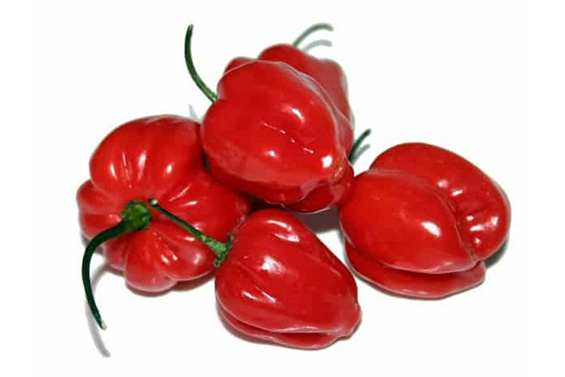
|
Product: Rocoto (Capsicum pubescens)
|
|
| Basic Information: Used as a spicy condiment in the cuisine of Andean Gastronomy. It is a relatively spicy fruit (capsaicin is the substance that gives it its spiciness): its range on the Scoville scale is between 100,000 SHU to 200,000 SHU. | |
|
Origin: Peru
|
Region: Pasco, Huánuco, Arequipa, and Junín.
|
|
Seasonality:
Jan
Feb
Mar
Apr
May
Jun
Jul
Aug
Sep
Oct
Nov
Dec
|
|
|
Certifications: Kosher
|
Available presentations: In flakes, powder.
|
|
Suggested industrial applications: Food industry: meat products, sausages, fishing, preparations, baking.
|
|
|
Uses: Culinary seasoning, food additive, seasoning.
|
|
| Properties: They largely contain capsaicin, a component present in the Capsicum genus (genus of angiosperm plants) that not only gives the spicy flavor, but its properties as an analgesic and anticoagulant have been studied. | |
|
Main functionality: Its consumption provides, in any of its varieties, a wide diversity of nutrients. According to some research, eating chili pepper regularly has some effect on pain due to capsaicin and decreases appetite. In addition, Peruvian researchers have pointed to the potential of rocoto in preventing ulcers and stomach cancer.
|
|
|
Secondary functionality: Eating rocoto regularly lengthens life, relieves pain, and reduces appetite.
|
|
Nutritional Table:
| Components / Components | Per 100g / Per 100g |
| Calories / Calories | 318 kcal |
| Water / Water | 8 g |
| Carbohydrates / Carbohydrates | 56.63 g |
| Proteins / Proteins | 12.01 g |
| Total fat / Total fat | 17.27 g |
| Fiber / Fiber | 27.2 g |
| Ash / Ash | - |
| Calcium / Calcium | 148 mg |
| Phosphorus / Phosphorus | 2014 mg |
| Iron / Iron | 7.8 mg |
| Thiamine / Thiamine | 0.328 mg |
| Riboflavin / Riboflavin | 0.919 mg |
| Niacin / Niacin | 8.701 mg |
| Ascorbic acid / Ascorbic acid | 76.4 mg |